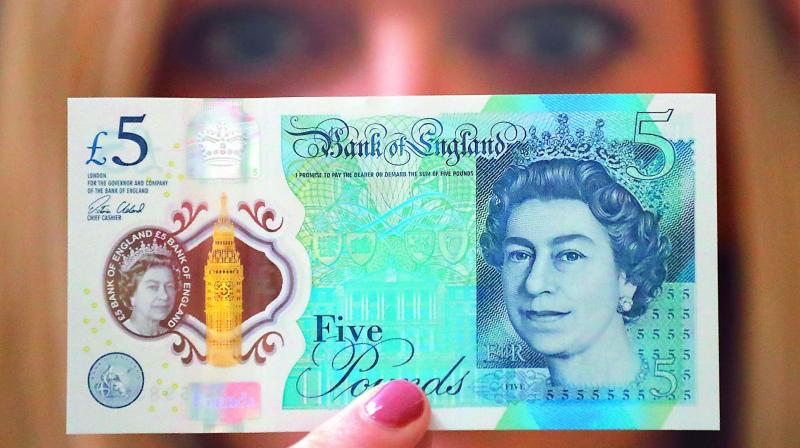Duly noted: Money that offends

This must be a first in the world of currency notes. Having introduced plastic £5 notes in order to make currency last longer, possibly take on fewer germs and to make life difficult for forgers, the Bank of England is now taking one step back on a bold initiative. The reason – vegans and vegetarians objected in numbers enough to cause a bit of brouhaha over the presence of traces of animal fat in the new notes. “The new STG5 notes contain animal fat in the form of tallow. This is unacceptable to millions of vegans, vegetarians, Hindus, Sikhs, Jains in the UK,” a petition signed by over one lakh people stated. There is a bit of tallow — a substance that comes from animal fat, either beef or mutton — in the polymer pellets that go into the notes. Showing a great deal of sensitivity, the Bank of England has promised to get to the bottom of the issue and eliminate the tallow even as the country readies for £20 and £10 notes by 2020.
Imagine such a problem creeping up in India whose currency notes do not contain much more than paper and ink and no polymers. Of course, that is another point the Australian inventor of plastic notes (the country printed $10 bills as early as in 1988) makes about the new money not destroying the forests for security paper. Another advantage for those who tend to forget where they keep their money is that plastic notes can survive the washing machine. Would that be laundered money or white money, is subject to interpretation. Everyone, including the blind, knows the colour of money, they say. But it’s here in India that we denominate notes as black or white rather than describe them by the pale green and light blue standard of the Rs 100 note. But the colour that is soon to become popular, at least with future hoarders, will be pink. The father of the nation will still be staring out of the Rs 2,000 note, but looking to his left rather than to his right. If that sounds somewhat quixotic given the shift of political winds, we can mark it as a new mystery of enigmatic Indian processes.
Or, maybe, they simply wanted to change things around as the Americans did to everything British, including driving on the left. Right now, Indians are gathering notes from reluctant ATMs and are too busy to wish to know what the new notes are made of. They can be rest assured that nothing that is not vegetarian would have got into the currency lest the battlers against beef in the land are beefed up for another battle. But then tallow is common in soap and candles. There is another point that the inventor of plastic notes makes and that has to do with hygiene — “It’s more hygienic than a paper note by a long way,” Professor David Solomon says. Cotton paper — sometimes mixed with linen or other fibres is infused with polyvinyl alcohol instead of water to give it extra strength — is the raw material most used in currency notes. India does not infuse gelatine in the processing, according to an official who used to work in the printing press in Mysuru.
This may be due to the fact that gelatine comes from collagen, which is sourced from animal raw materials. India would ideally wish to push more people into higher density plastic in the age of credit, debit, loyalty and pay cards in its most ambitious digital revolution than leap into the era of plastic currency. One environmentalist concern post-demonetisation of 22 billion high-value notes is about how they are to be disposed of. If placed end to end, the notes would go to Mars and come back. If piled up, they would be the equivalent of 300 Mount Everests, according to one estimate. Just imagine what it will do to the environment. What else but landfills would suffice as burning the notes would make the whole of Indian air as breathable as that of its capital, now rated the most polluted city in the world?

